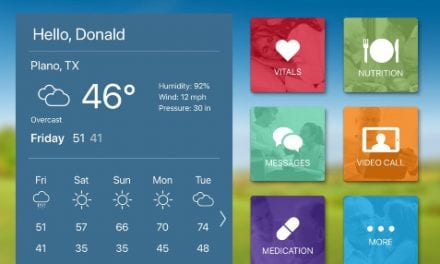After arthroscopic surgery on the meniscus of the knee, patients using telemedicine for postoperative follow-up are just as satisfied with their care as those making in-person visits, according to a study published in The Journal of Bone & Joint Surgery.
The journal is published in the Lippincott portfolio in partnership with Wolters Kluwer.
“Patient satisfaction with overall care is equivalent between telemedicine and office-based follow-up after an arthroscopic meniscal surgical procedure in the immediate postoperative period.”
— Christina P. Herrero, MD, and colleagues of NYU Langone Health, New York, and colleagues
Telemedicine vs Office Visit
The study included 122 patients who underwent arthroscopic surgery of the meniscus – sometimes called the “shock absorber” of the knee. About 88% of patients underwent removal of the meniscus (meniscectomy), and the rest underwent meniscal repair procedures.
Patients were randomly assigned to either office-based or telemedicine follow-up, scheduled for 5 to 14 days postoperatively. During both types of follow-up visits, the surgeon talked to the patient about the surgical findings, the patient’s pain, and the postoperative recovery period and performed a physical examination that included range-of-motion testing.
Of course, surgeons could not feel or touch the knee during telemedicine follow-ups – but they were still able to perform a visual assessment of wound healing, drainage, and swelling. Telemedicine follow-ups were performed using the patient’s home computer or mobile device via a telemedicine program that was compliant with privacy rules.
In patient surveys, overall satisfaction ratings were almost identical between groups. Average patient satisfaction scores (on a 0-to-10 scale) were 9.77 with office-based follow-up and 9.79 for telemedicine follow-up. In both groups, only about 20% of patients said they would have preferred the other type of visit. Pain scores also showed similar improvement between groups: from about 5 (out of 10) on the day of the surgery to 3 at the follow-up visit, a media release from Wolters Kluwer Health explains.
Low Complication Rates
Both groups had low complication rates. Two patients in each group had pain and swelling, raising concern about a possible blood clot-related complication (venous thromboembolism, or VTE). All four patients were sent for same-day Doppler ultrasound scans, which found no evidence of VTE.
“All potential complications were identified, and there were no subsequent or missed complications identified on subsequent chart review.”
— Dr. Herrero and colleagues write
A Promising Approach
Telemedicine is a promising approach to delivering “direct, long-range care” to patients with many different conditions, the release continues. During the COVID-19 pandemic, the use of telemedicine in routine medical care has greatly accelerated; the researchers began their study well before the start of the pandemic.
Although studies have reported a wide range of benefits from telemedicine visits, there are mixed data regarding satisfaction with telemedicine visits among patients undergoing common orthopaedic procedures. The new study directly compares telemedicine with standard office-based follow-up after orthopaedic surgery.
“Telemedicine may be a reasonable alternative to office-based follow-up after knee arthroscopy. [Our] study only evaluated the first postoperative visit, but future studies may benefit from expanding the use of telemedicine to longer-term follow-ups or to additional surgical procedures.”
— Dr. Herrero and coauthors conclude
[Source(s): Wolters Kluwer Health, EurekAlert]
Related Content:
Kennedy Krieger Receives FCC Grant to Improve Access to Telemedicine
Telemedicine-Delivered Arm Rehab Results on Par with In-Person Clinic
Telemedicine Could Play a Key Role in Maintaining Rural ERs





